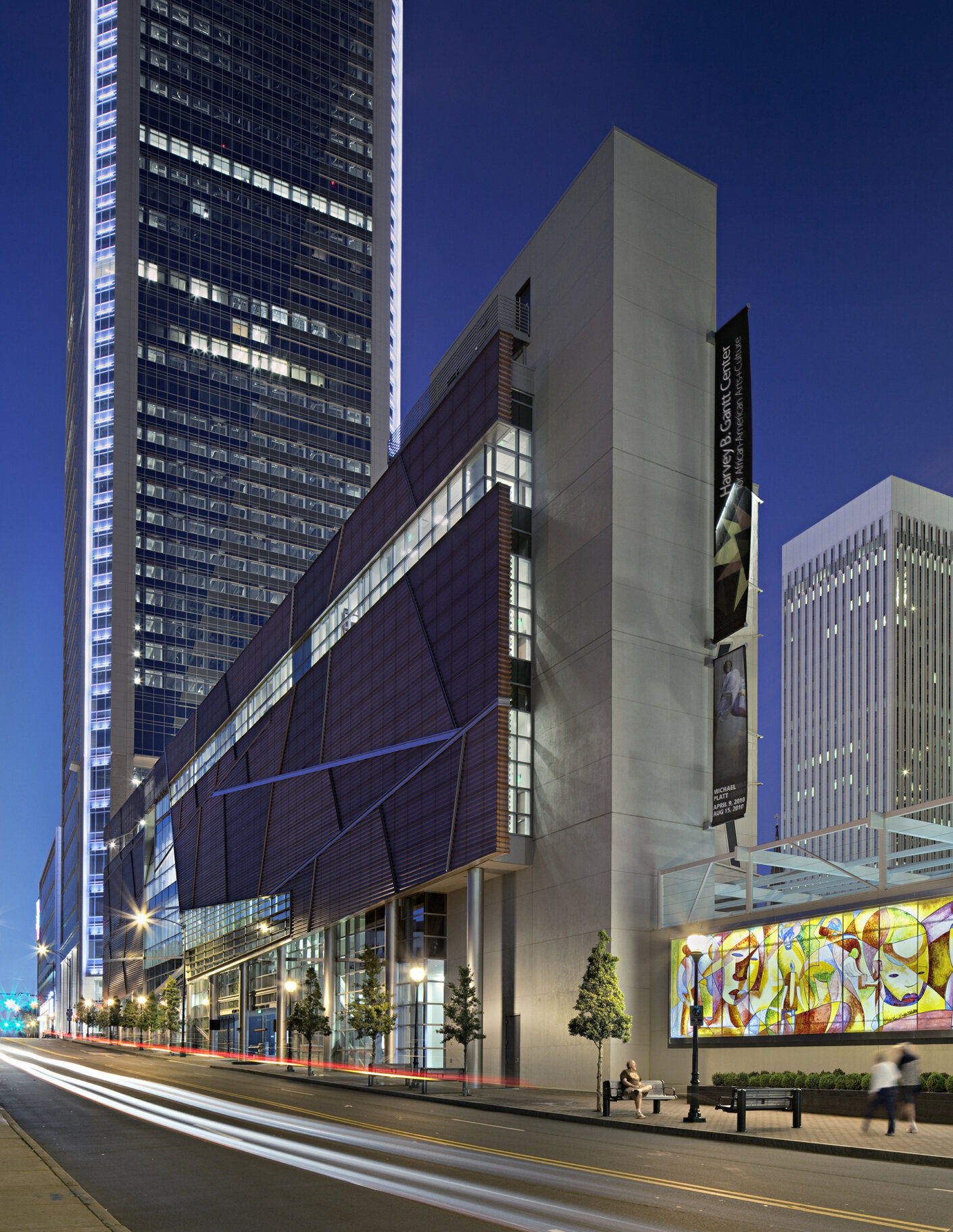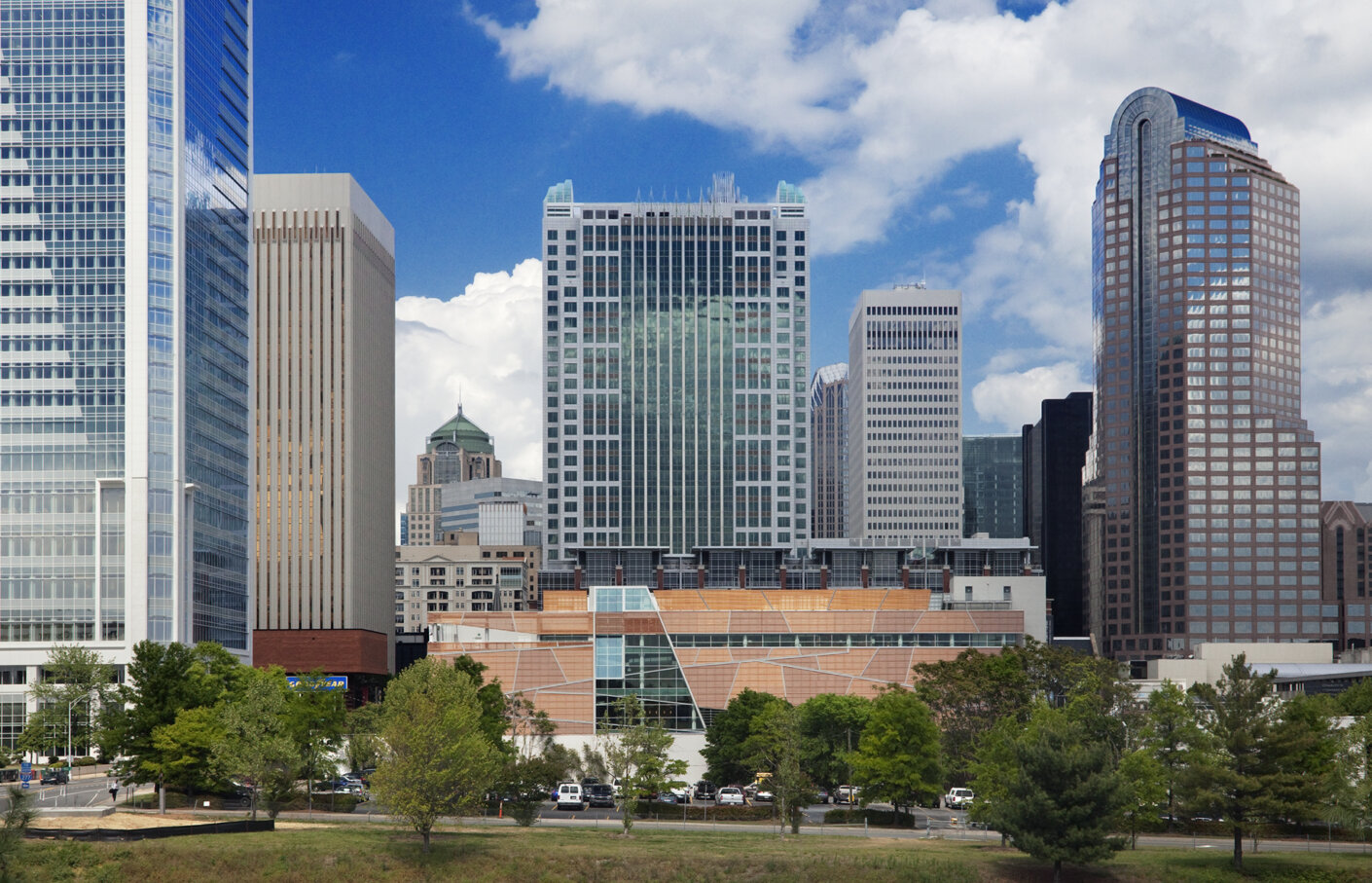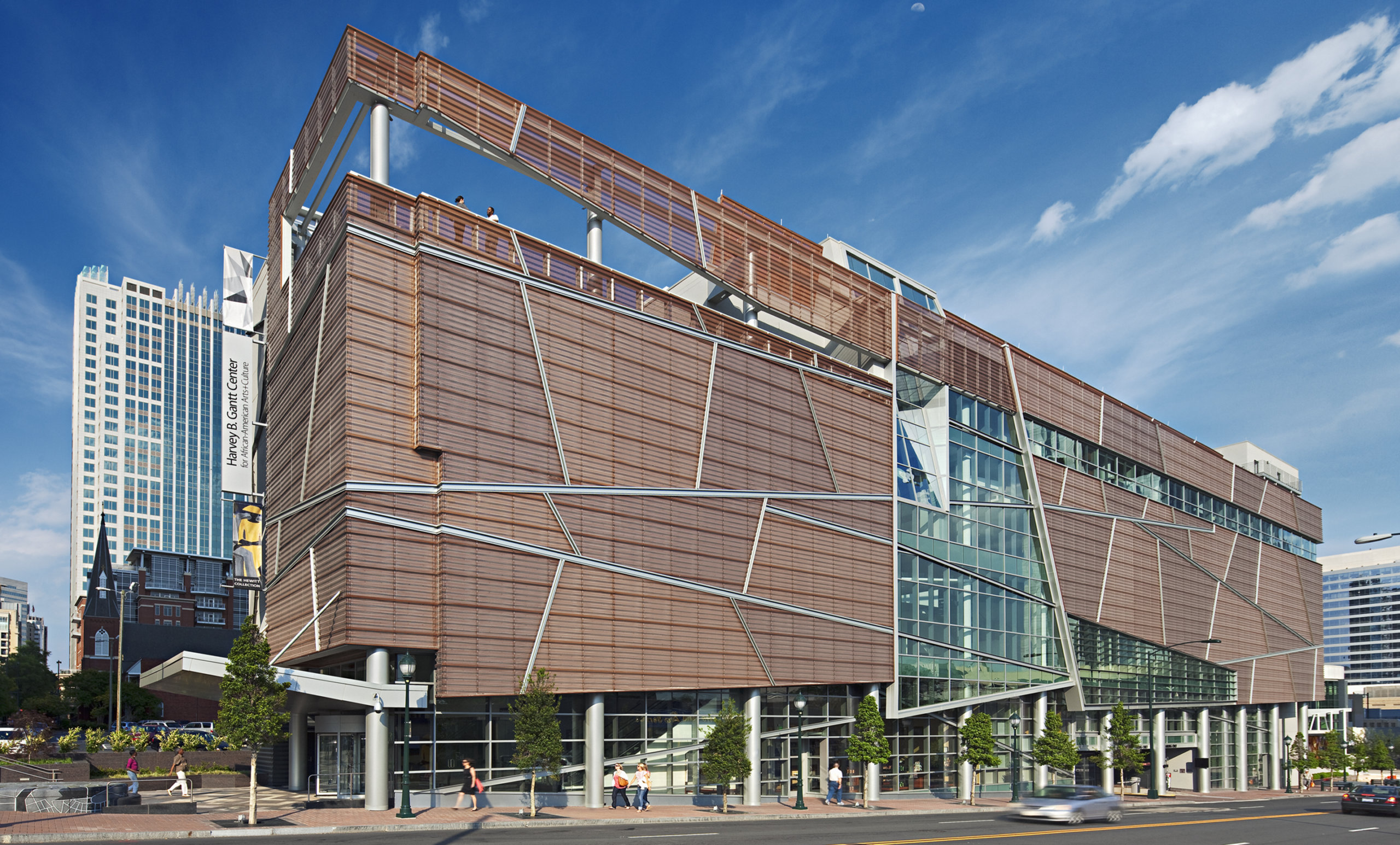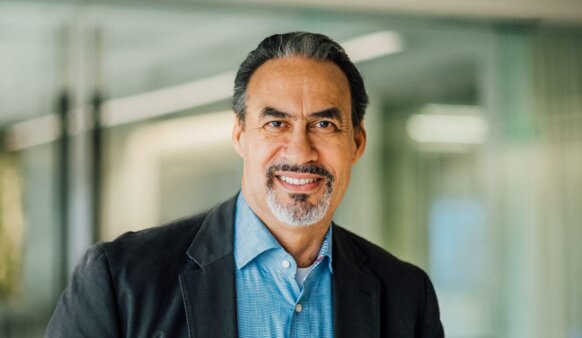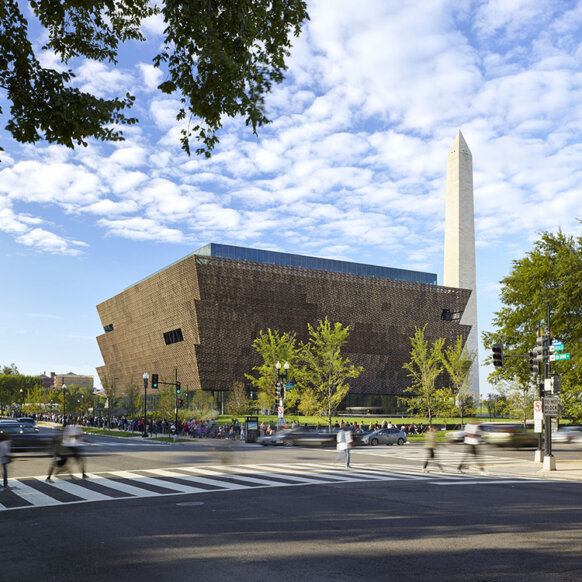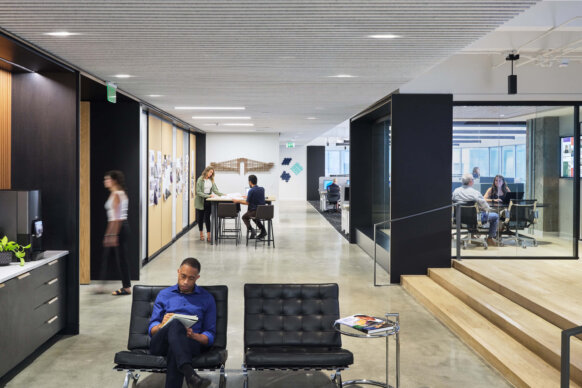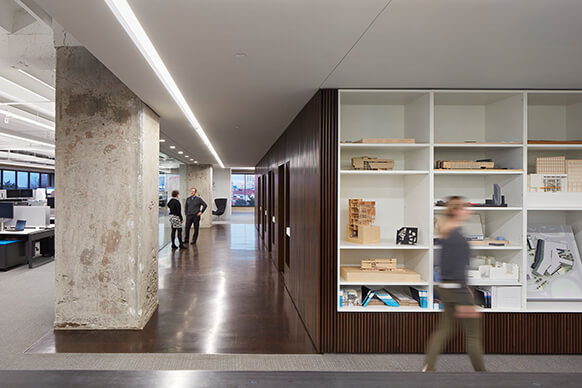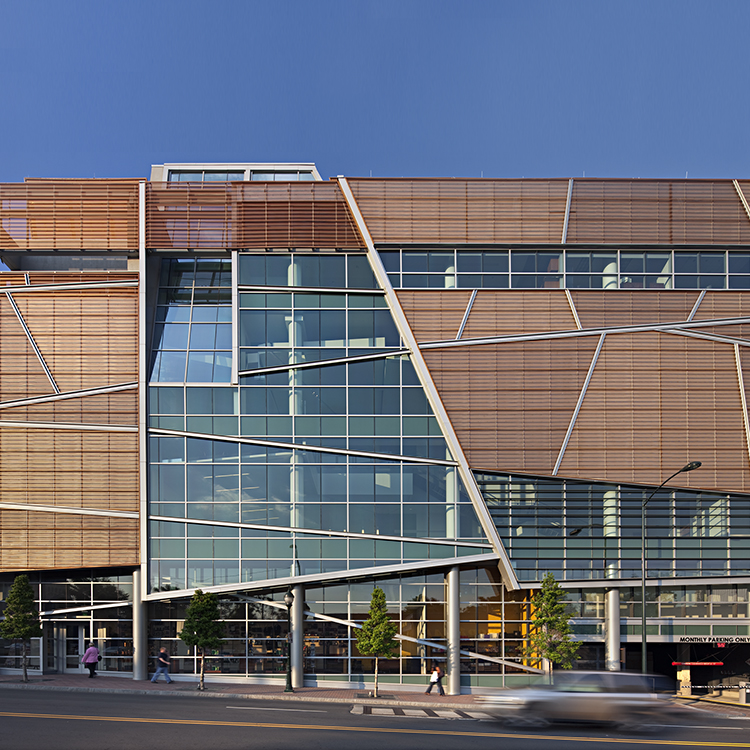
Harvey B. Gantt Center for African-American Arts + Culture
The Gantt Center for African American Arts + Culture tells the story of a lost community and the school that once stood on this portion of uptown Charlotte. Known as the Jacob’s Ladder School because of the large stair that rose up on its exterior to represent progress through education, the symbol of this site became an organizing element for the design. Visitors enter either end of the long building and rise up to a sky lobby overlooking Charlotte. Framing this large glass wall is a highly textured building façade inspired by African quilting patterns. The bold, copper tones of the Gantt Center stand in strong contrast to the neighboring corporate towers of uptown Charlotte.
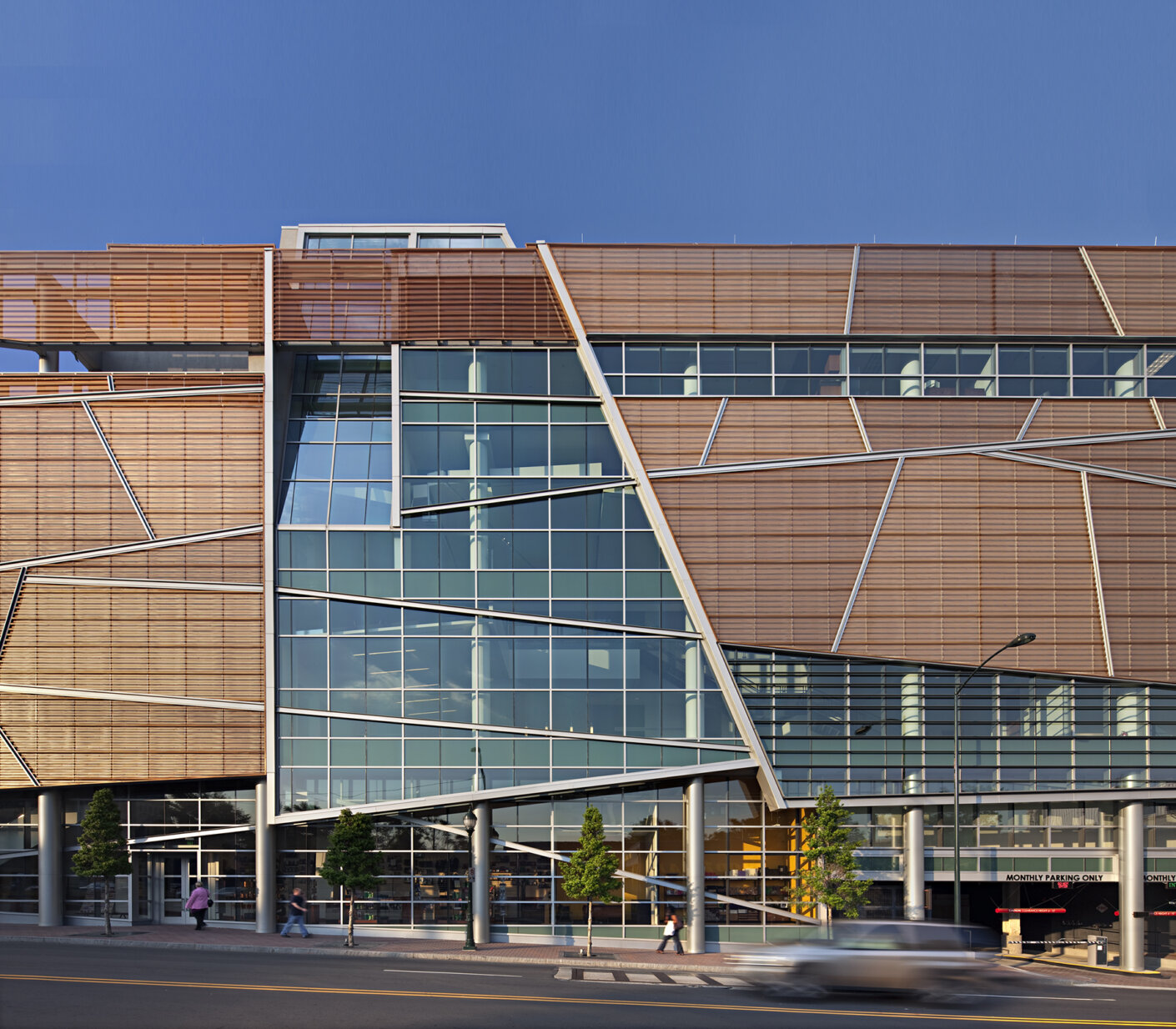

Quilting Patterns
The exterior façade is inspired by African textile designs and African American quilting patterns. Perforated metal panels are “stitched” together by diagonal steel channels, with windows provided in areas needing daylight.
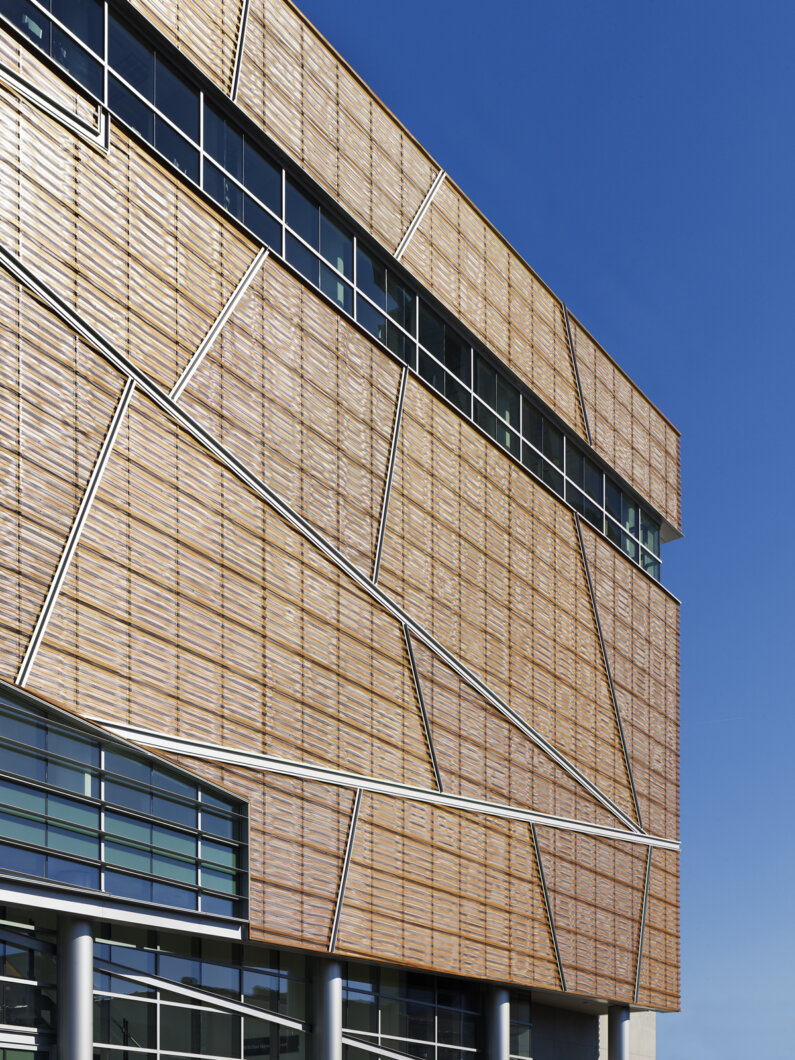
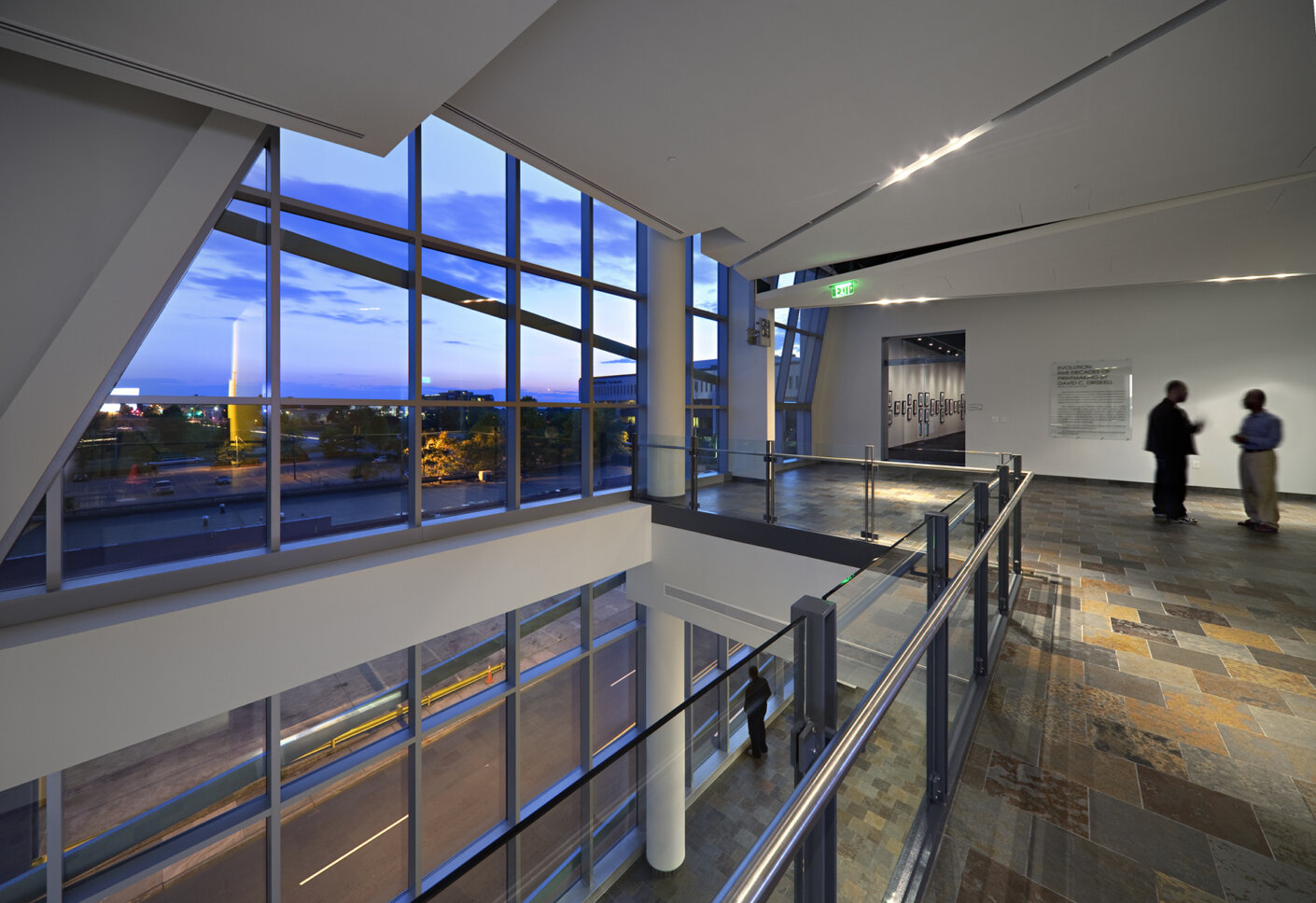
The Center is a cross-generational cultural hub connecting Charlotte’s diverse population. The center celebrates the contributions of African Americans to our nation’s culture and serves as a vital resource in Charlotte for music, dance, theater, visual and film arts, arts education, literature, and community outreach.
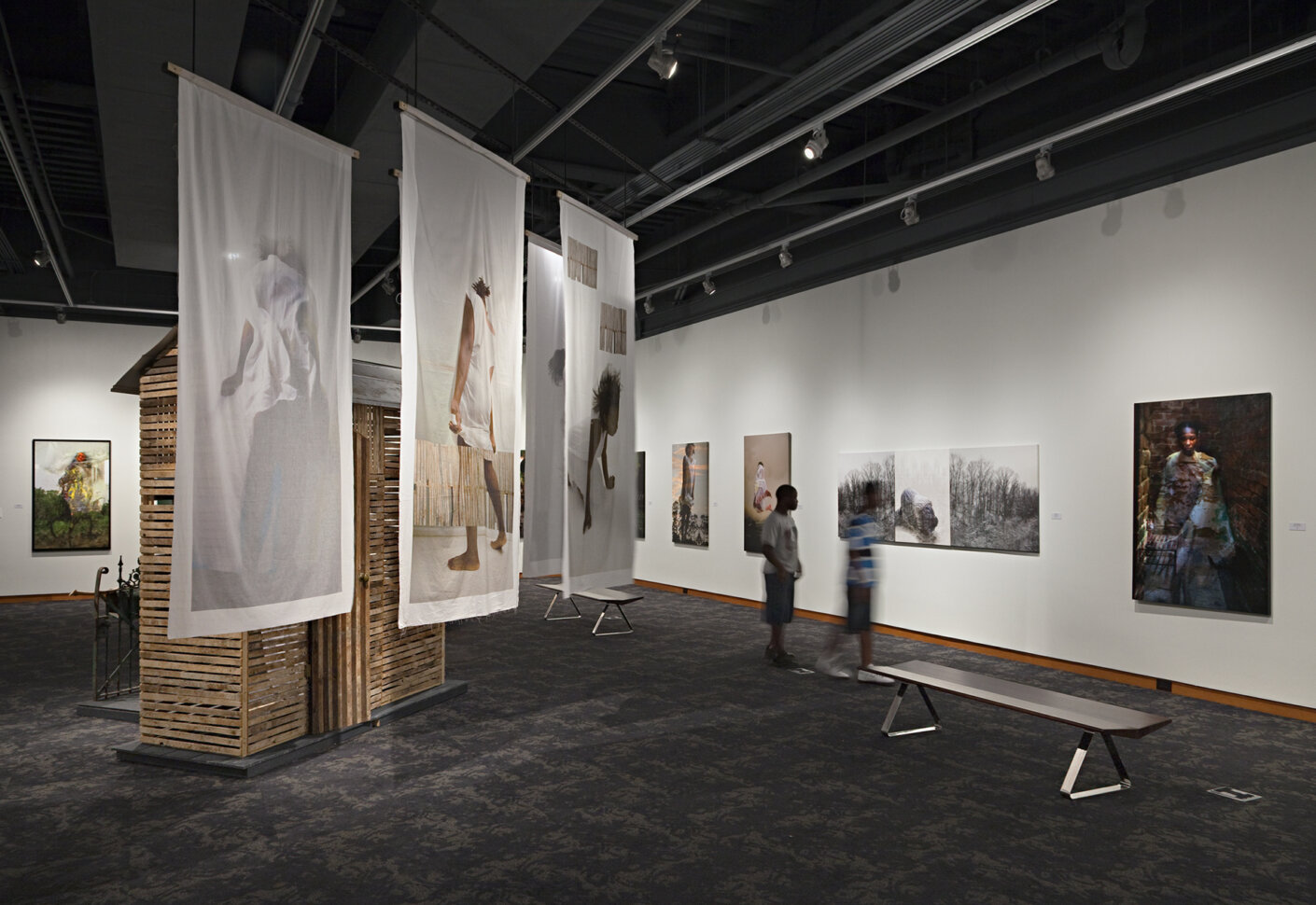
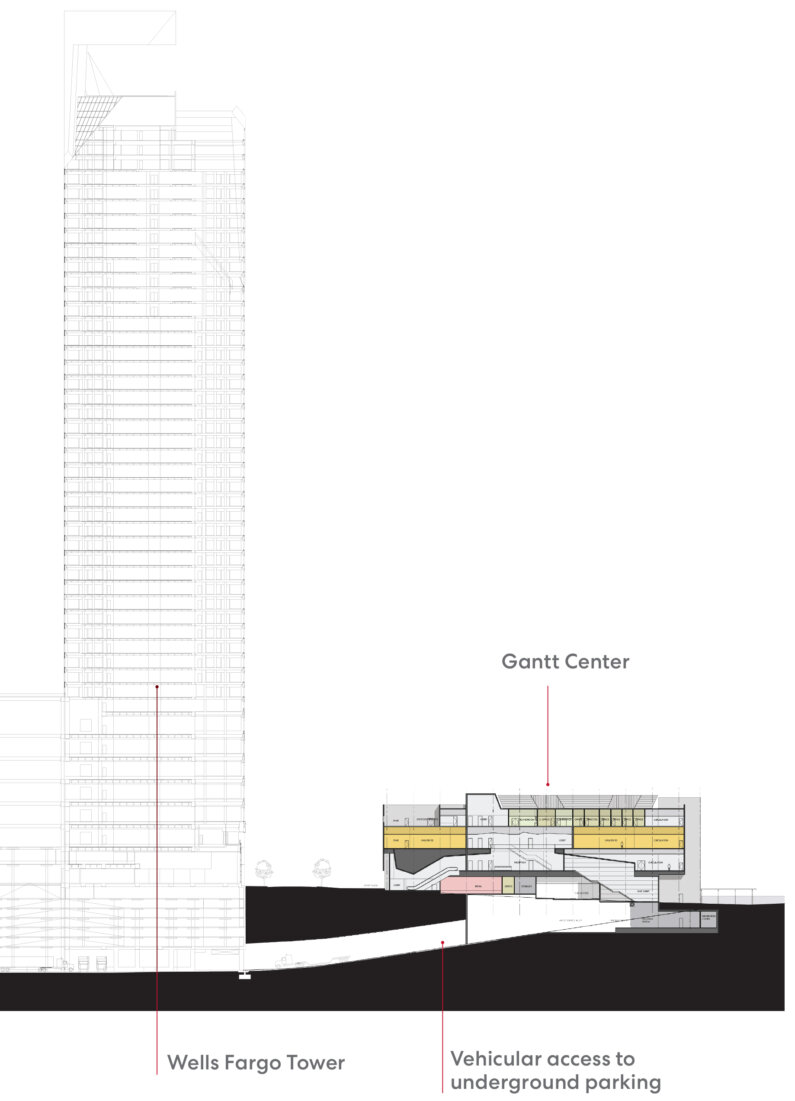
The Center’s design developed an “unusable” site into an award-winning cultural nexus. The design had to fit into a very narrow tract of land above ground-level car and truck access ramps leading to underground parking.
The Center’s main lobby was elevated to the second floor allowing for the needed traffic flow and uninterrupted visitor access to galleries and event spaces.
